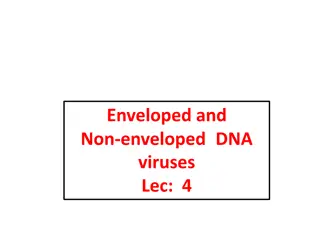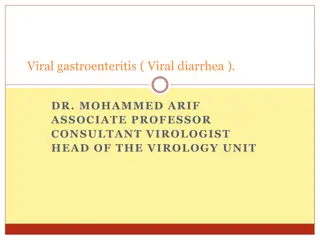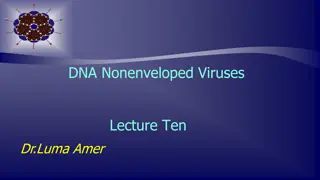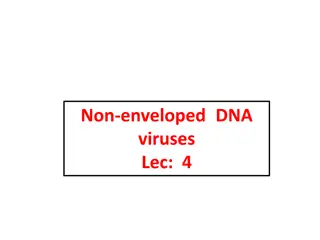Understanding Enveloped and Non-enveloped DNA Viruses
Non-enveloped DNA viruses, surrounded by a protein capsid, are resistant to sterilization and thrive in acidic environments. Adenoviruses, a common non-enveloped type, spread through close contact and contaminated objects. Additionally, Papilloma and Polyoma viruses, causing persistent infections an
0 views • 23 slides
Understanding Viral Gastroenteritis: Causes, Symptoms, and Transmission
Viral gastroenteritis, commonly known as viral diarrhea, is a prevalent infection affecting mainly infants and young children. The disease is self-limiting, with symptoms like diarrhea, vomiting, and abdominal pain. Key viral etiologies include Rota viruses, Astroviruses, Norovirus, and Enteric aden
0 views • 19 slides
Understanding Adenoviruses: Structure, Replication, and Epidemiology
Adenoviruses, known for causing respiratory infections, have at least 41 serotypes categorized into 6 subgenera. Their structure includes 252 capsomeres, 240 hexons, and specific proteins for attachment. The replication involves virus attachment, penetration, uncoating, and transportation of viral D
0 views • 22 slides
Overview of Non-Enveloped DNA Viruses and Their Impact on Human Health
Non-enveloped DNA viruses are surrounded by a protein coat called a capsid, making them difficult to sterilize and highly resilient in various environments. This article explores the characteristics and impact of non-enveloped DNA viruses such as Adenoviruses, Papilloma and Polyoma Viruses, and Huma
0 views • 16 slides



